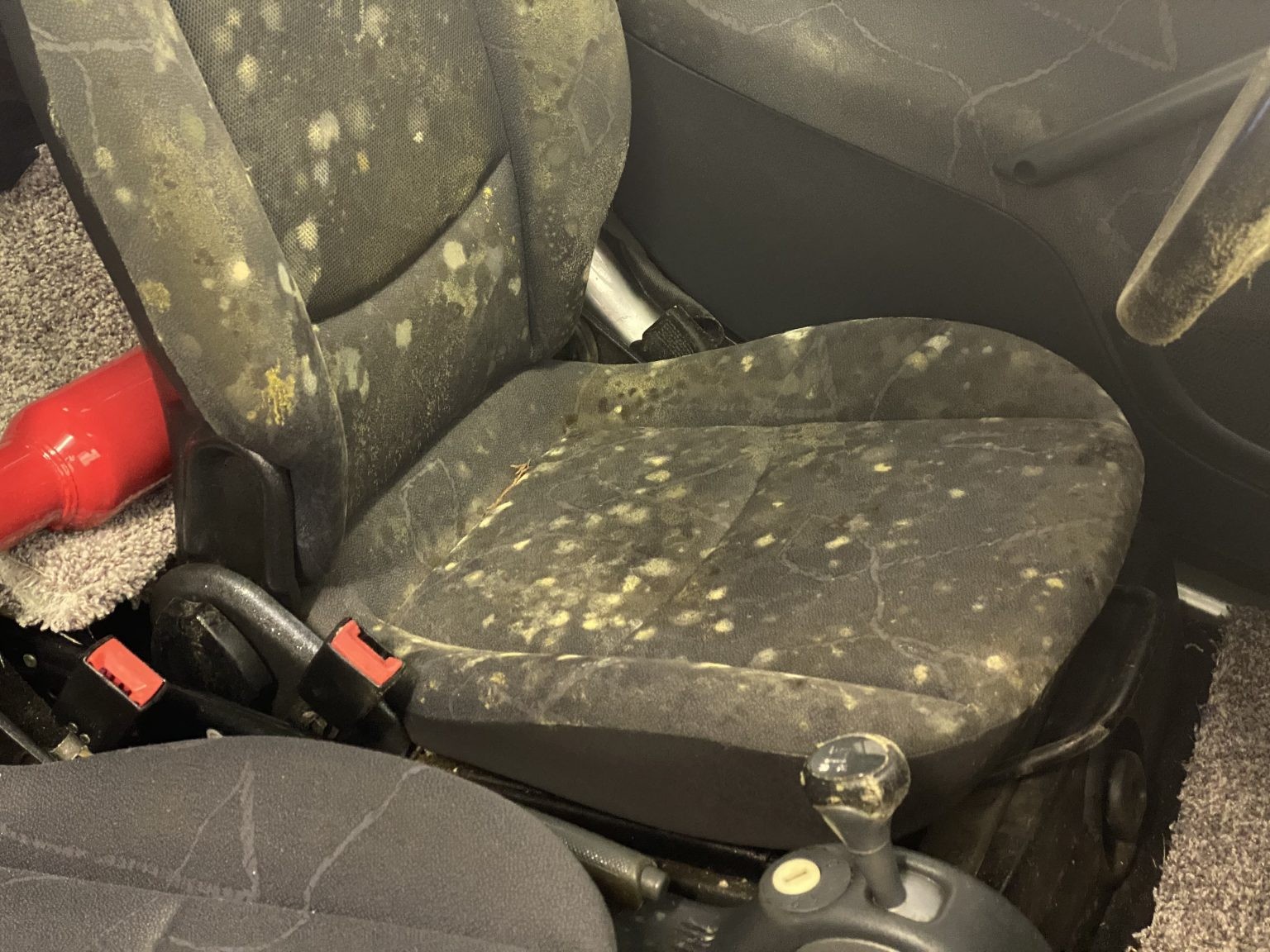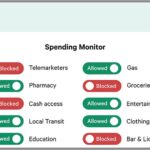Discovering mold in your car can be unsettling, to say the least. It’s not just an eyesore; it can pose health risks and diminish your vehicle’s value. If you’ve found yourself facing this unpleasant situation, you’re likely searching for effective solutions. This guide provides a step-by-step approach on how to clean mold out of your car, ensuring a safe, thorough, and lasting removal. We’ll cover everything from identifying mold to preventing its return, drawing on expert methods and practical advice to help you restore your car’s interior to a clean and healthy state.
Identifying Mold and Understanding the Risks
Before diving into the cleaning process, it’s crucial to confirm you’re dealing with mold and understand why it’s important to address it promptly.
Recognizing Mold Infestation
Mold is a type of fungus that thrives in damp, poorly ventilated environments. In cars, it often appears after water leaks, spills left unattended, or prolonged humidity. Here are common signs of mold in your vehicle:
- Visual Signs: Mold can manifest as discolored patches, often white, gray, green, or black, on fabric seats, carpets, headliners, and even hard surfaces like dashboards and door panels. It may look fuzzy, slimy, or powdery.
- Musty Odor: A persistent, musty smell is a strong indicator of mold presence, even if visible signs are not immediately apparent. This odor is caused by microbial volatile organic compounds (MVOCs) released by mold.
- Allergic Reactions: If you or your passengers experience unexplained allergy symptoms like sneezing, coughing, itchy eyes, or skin irritation while in the car, mold could be the culprit.
Health Implications of Mold Exposure
Mold isn’t just a cosmetic problem. Exposure to mold spores can lead to various health issues, especially for individuals with allergies, asthma, or weakened immune systems. These health risks include:
- Respiratory Problems: Mold spores can irritate the respiratory system, causing coughing, wheezing, shortness of breath, and throat irritation.
- Allergic Reactions: Mold is a common allergen. Exposure can trigger allergic reactions, including sneezing, runny nose, itchy eyes, and skin rashes.
- Asthma Attacks: For people with asthma, mold exposure can exacerbate symptoms and trigger asthma attacks.
- Other Health Concerns: Prolonged exposure to certain types of mold may contribute to more serious health problems.
Addressing mold in your car is therefore not just about cleanliness; it’s about safeguarding your health and the health of your passengers.
Step-by-Step Guide to Cleaning Mold from Your Car Interior
Cleaning mold from a car requires a systematic approach to ensure complete removal and prevent regrowth. Here’s a detailed guide:
1. Safety First: Preparation and Protective Gear
Mold remediation can involve irritants, so safety is paramount. Before you begin:
- Ventilation: Work in a well-ventilated area, preferably outdoors or with the car doors wide open. This helps disperse mold spores and cleaning fumes.
- Protective Gear: Wear appropriate personal protective equipment (PPE) to avoid direct contact with mold and cleaning chemicals:
- Respirator or Mask: An N95 respirator mask or a mold-rated mask is essential to prevent inhaling mold spores.
- Gloves: Wear non-porous gloves, such as rubber or nitrile gloves, to protect your skin.
- Eye Protection: Safety glasses or goggles will shield your eyes from mold spores and cleaning solutions.
- Old Clothing: Wear clothes you don’t mind getting dirty or potentially stained by mold or cleaning products.
2. Gather Your Mold Cleaning Supplies
Having the right tools and cleaning agents will make the job more effective and efficient. Here’s a list of recommended supplies:
- Vacuum Cleaner with HEPA Filter: A HEPA (High-Efficiency Particulate Air) filter vacuum is crucial to trap mold spores and prevent them from recirculating in the air.
- Stiff Brush: For scrubbing mold from surfaces like carpets and upholstery.
- Microfiber Cloths: For wiping and cleaning surfaces.
- Cleaning Solutions: Choose from these effective mold removal options:
- Commercial Mold Remover: Products specifically designed for mold removal, like RMR-86 Pro mold remover, are potent and effective. Ensure they are safe for car interiors and follow manufacturer instructions.
- White Vinegar: A natural and milder option. Undiluted white vinegar can kill many types of mold.
- Baking Soda and Water Paste: For less severe mold, a paste of baking soda and water can be effective.
- Mild Detergent and Water: For general cleaning after mold removal.
- Spray Bottles: For applying cleaning solutions.
- Bissell Little Green Pro or Similar Cleaning Machine (Optional but Recommended): An extractor-type cleaning machine can inject cleaning solution and extract moisture, which is particularly useful for fabric interiors.
- Ozone Generator (Optional): An ozone generator can help eliminate lingering mold odors after cleaning, but use with caution and follow safety guidelines.
3. Initial Cleaning and Mold Removal
- Vacuuming: Begin by thoroughly vacuuming the entire car interior, focusing on mold-affected areas. Use the HEPA vacuum to capture surface mold spores. Dispose of the vacuum bag carefully afterward, ideally outside the car.
- Apply Cleaning Solution: Choose your cleaning solution. For a potent approach, use a commercial mold remover like RMR-86 Pro, carefully following safety instructions and testing on an inconspicuous area first to check for colorfastness. Alternatively, use undiluted white vinegar in a spray bottle.
- Scrubbing and Wiping: Apply the cleaning solution to moldy areas. For fabric surfaces, use a stiff brush to gently scrub the mold. For hard surfaces, wipe with a microfiber cloth dampened with the cleaning solution. Avoid soaking fabric surfaces excessively.
- Extraction (If Using Cleaning Machine): If you’re using a cleaning machine like a Bissell Little Green Pro, follow the manufacturer’s instructions to inject the cleaning solution and extract the liquid along with dislodged mold and dirt. This helps to remove moisture and cleaning residue effectively.
- Repeat if Necessary: For stubborn mold stains, you may need to repeat the cleaning process.
4. Deep Cleaning and Disinfection
After the initial mold removal, a more thorough cleaning is recommended:
- Clean All Surfaces: Clean all interior surfaces, including seats, carpets, floor mats, dashboard, door panels, headliner, and vents. Use a mild detergent and water solution for general cleaning.
- Disinfect: Consider using a disinfectant on hard surfaces to kill any remaining mold spores and bacteria. Follow the disinfectant product’s instructions.
- Clean or Replace Floor Mats: Remove floor mats and clean them separately. If they are heavily mold-infested, consider replacing them.
5. Drying the Car Interior Thoroughly
Moisture is mold’s best friend. Thorough drying is crucial to prevent mold from returning:
- Air Drying: Open all car doors and windows on a dry, sunny day to allow for natural air circulation and drying.
- Fans: Use fans to circulate air inside the car and speed up the drying process.
- Dehumidifier: In humid climates or if air drying is insufficient, place a dehumidifier inside the car to draw out moisture.
- Sunlight: Park the car in direct sunlight (if safe and weather permits). Sunlight can naturally help kill mold and dry out the interior.
- Remove and Dry Components (If Possible): If carpets or seat covers are removable, take them out to dry separately in the sun. In the original article, the author even placed glasspack and flex pipe under the carpets to promote airflow for drying.
6. Final Inspection and Prevention
- Inspect for Remaining Mold: After drying, carefully inspect all cleaned areas for any signs of remaining mold or musty odor. If mold persists, repeat the cleaning process or consider professional mold remediation services.
- Odor Elimination (Optional): If a musty odor lingers, an ozone generator can be used to help neutralize odors. However, use ozone generators cautiously, ensuring the car is unoccupied during operation and properly ventilated afterward.
- Prevention: Implement measures to prevent mold from returning (see next section).
Maintaining a Mold-Free Car: Prevention is Key
Once you’ve successfully cleaned the mold, preventing its return is essential. Here are key preventative measures:
- Identify and Fix Leaks: Address any water leaks promptly, whether from windows, sunroof, or the car’s undercarriage. Leaks are the primary cause of moisture buildup.
- Ventilation: Ensure good ventilation in your car. Use the air conditioning or heater with fresh air intake to circulate air and reduce humidity, especially in damp weather.
- Moisture Control:
- Avoid Leaving Wet Items: Do not leave wet items like towels, clothes, or umbrellas in your car.
- Dry Spills Immediately: Clean up spills immediately and ensure the area is thoroughly dried.
- Use Floor Mats: Use car floor mats to absorb moisture and prevent it from soaking into the carpet.
- Consider Moisture Absorbers: In humid climates, consider using moisture absorber products in your car to reduce humidity levels.
- Regular Cleaning: Regularly clean your car interior, including vacuuming and wiping down surfaces, to prevent dirt and moisture buildup that can promote mold growth.
- Park Smart: If possible, park your car in shaded areas to reduce heat buildup and condensation inside the vehicle.
Conclusion
Cleaning mold out of your car is a manageable task with the right approach and tools. By following these steps, you can effectively remove mold, eliminate health risks, and restore your car’s interior. Remember that prevention is crucial. By maintaining a dry and well-ventilated car, you can enjoy a clean, healthy, and mold-free driving environment for years to come. If you’re dealing with extensive mold or are unsure about the process, don’t hesitate to seek professional car detailing or mold remediation services.

